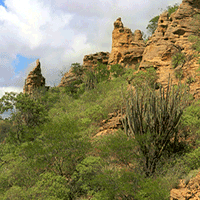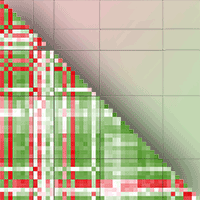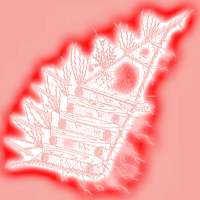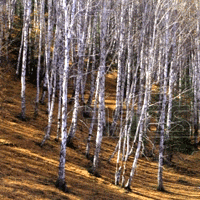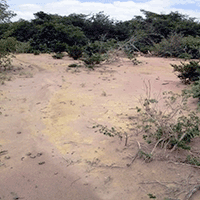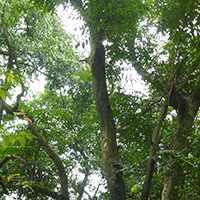Wind disturbance is a major natural driver of forest dynamics in a large part of Europe and can affect soil properties in different ways and for different time. The present study focuses on the effects of post-disturbance management of windthrow plots in the Tatra Mountains, Slovakia, on soil microorganisms ten years after the disturbance. Their comparison with the microbial characteristics at a new windthrow plot caused by strong wind in 2014 was also carried out. Three research plots differing in the way of their management after the windstorm in 2004 (EXT, salvage plot; FIR, salvage plot affected by fire; NEX, unsalvaged plot) and the plot destroyed by strong wind in May 2014 (REX) were used for study. Ten soil samples were taken from the mineral A-horizon (depth: 0-10 cm) at each plot in autumn 2014. In soil samples, soil chemical and microbial characteristics (microbial biomass C, basal and substrate-induced respiration, N-mineralisation, catalase activity, richness and diversity of soil microbial functional groups based on the Biolog approach) were determined. Ten years after the disturbance we still observed significant differences in microbial characteristics between FIR and the other plots, with higher microbial activity at the FIR, while no significant differences were found among the other plots. The results indicate that at a higher altitude the effect of fire on soil microorganisms is more distinct than removing or not removing of fallen trees and persists even over a decade.
Keywords
, , , ,
Citation
Gömöryová E, Fleischer P, Pichler V, Homolák M, Gere R, Gömöry D (2017). Soil microorganisms at the windthrow plots: the effect of post-disturbance management and the time since disturbance. iForest 10: 515-521. - doi: 10.3832/ifor2304-010
Academic Editor
Rupert Seidl
Paper history
Received: Dec 11, 2016
Accepted: Mar 17, 2017
First online: Apr 20, 2017
Publication Date: Apr 30, 2017
Publication Time: 1.13 months
© SISEF - The Italian Society of Silviculture and Forest Ecology 2017
Open Access
This article is distributed under the terms of the Creative Commons Attribution-Non Commercial 4.0 International (https://creativecommons.org/licenses/by-nc/4.0/), which permits unrestricted use, distribution, and reproduction in any medium, provided you give appropriate credit to the original author(s) and the source, provide a link to the Creative Commons license, and indicate if changes were made.

Breakdown by View Type
(Waiting for server response...)
Article Usage
Total Article Views: 48654
(from publication date up to now)
Breakdown by View Type
HTML Page Views: 40782
Abstract Page Views: 2841
PDF Downloads: 3760
Citation/Reference Downloads: 24
XML Downloads: 1247
Web Metrics
Days since publication: 3164
Overall contacts: 48654
Avg. contacts per week: 107.64
Article Citations
Article citations are based on data periodically collected from the Clarivate Web of Science web site
(last update: Mar 2025)
Total number of cites (since 2017): 14
Average cites per year: 1.56
Publication Metrics
by Dimensions ©
Articles citing this article
List of the papers citing this article based on CrossRef Cited-by.
(1)
Alef K (1991)Methodenhandbuch Bodenmikrobiologie. Aktivitäten, Biomasse, Differenzierung [Methodical manual for soil microbiology. Activities, biomass, differentiation]. Ecomed, Landesberg, Germany, pp. 284. [in German]
Gscholar
(2)
Bárcenas-Moreno G, García-Orenes F, Mataix-Solera J, Mataix-Beneyto J, Bååth E (2011)Soil microbial recolonisation after a fire in a Mediterranean forest. Biology and Fertility of Soils 47: 261-272.
CrossRef |
Gscholar
(3)
Bormann BT, Spaltenstein H, McClellan MH, Ugolini FC, Cromack K, Nay SM (1995)Rapid soil development after windthrow in pristine forests. Journal of Ecology 83: 747-757.
CrossRef |
Gscholar
(4)
Cerevková A, Renčo M, Cagán L (2013)Short-term effects of forest disturbances on soil nematode communities in European mountain spruce forests. Journal of Helminthology 87: 376-385.
CrossRef |
Gscholar
(5)
Certini G (2005)Effects of fire on soil properties: a review. Oecologia 143: 1-10.
CrossRef |
Gscholar
(6)
Dangi SR, Stahl PD, Pendall E, Cleary MB, Buyer JS (2010)Recovery of soil microbial structure after fire in a sagebrush-grassland ecosystem. Land Degradation and Development 21: 423-432.
Gscholar
(7)
Fleischer P (2011)Pokalamitný výskum vo Vysokých Tatrách - ciele, metódy a charakteristika lokalít [Postdisturbance research in High Tatra Mts. - aims, methods and site characteristics]. Štúdie o Tatranskom národnom parku 10: 7-12. [in Slovak]
Gscholar
(8)
Gömöryová E, Strelcová K, Fleischer P, Gömöry D (2011)Soil microbial characteristics at the monitoring plots on windthrow areas of the Tatra National Park (Slovakia): their assessment as environmental indicators. Environmental Monitoring and Assessment 174: 31-45.
CrossRef |
Gscholar
(9)
Gömöryová E, Strelcová K, Skvarenina J, Bebej J, Gömöry D (2008)The impact of windthrow and fire disturbances on selected soil properties in the Tatra National Park. Soil and Water Research 3: 574-580.
Online |
Gscholar
(10)
Hart SC, DeLuca TH, Newman SG, Mackenzie MD, Boyle SI (2005)Post-fire vegetative dynamics as drivers of microbial community structure and function in forest soils. Forest Ecology and Management 220: 166-184.
CrossRef |
Gscholar
(11)
Hartmann A, Kobler J, Kralik M, Dirnbock T, Humer F, Weiler M (2016)Model-aided quantification of dissolved carbon and nitrogen release after windthrow disturbance in an Austrian karst system. Biogeosciences 13: 159-174.
CrossRef |
Gscholar
(12)
Hedo J, Lucas-Borja ME, Wic C, Andrés-Abellán M, De Las Heras J (2015)Soil microbiological properties and enzymatic activities of long-term post-fire recovery in dry and semiarid Aleppo pine (
Pinus halepensis M.) forest stands. Solid Earth 6: 243-252.
CrossRef |
Gscholar
(13)
Hill MO (1973)Diversity and evenness: a unifying notation and its consequences. Ecology 54: 427-432.
CrossRef |
Gscholar
(14)
Holden SR, Treseder KK (2013)A meta-analysis of soil microbial biomass responses to forest disturbances. Frontiers in Microbiology 4: 163.
CrossRef |
Gscholar
(15)
Holden SR, Rogers BM, Treseder KK, Randerson JT (2016)Fire severity influences the response of soil microbes to a boreal forest fire. Environmental Research Letters 11: 035004.
CrossRef |
Gscholar
(16)
Homolová Z, Kyselová Z, Soltés R (2015)Dynamika vegetácie na kalamitných plochách v spoločenstve Lariceto-Piceetum [Vegetation dynamics on post-disturbance plots in the
Lariceto-Piceetum community]. Štúdie o Tatranskom národnom parku 11: 191-200. [in Slovak]
Gscholar
(17)
Insam H (1997)A new set of substrates proposed for community characterization in environmental samples. In: “Microbial Communities. Functional
versus Structural Approaches” (Insam H, Rangger A eds). Springer, Heidelberg, Germany, pp. 260-261.
Online |
Gscholar
(18)
Islam KR, Weil RR (1998)Microwave irradiation of soil for routine measurements of microbial biomass carbon. Biology and Fertility of Soils 27: 408-416.
CrossRef |
Gscholar
(19)
Kandeler E (1993)Bestimmung der N-mineralisation im anaeroben Brutversuch [Determination of N-mineralisation in an anaerobic cultivation experiment]. In: “Bodenbiologische Arbeitsmethoden” (Schinner F et al. eds). Springer Verlag, Berlin, Heidelberg, New York, pp. 160-161. [in German]
Gscholar
(20)
Khaziev FCH (1976)Fermentativnaja aktivnost’ pochv [Enzymatic activity of soils]. Metodicheskoe posob’e, Moskva, Russia, pp. 262. [in Russian]
Gscholar
(21)
Knelman JE, Graham EB, Trahan NA, Schmidt SK, Nemergut DR (2015)Fire severity shapes plant colonization effects on bacterial community structure, microbial biomass, and soil enzyme activity in secondary succession of a burned forest. Soil Biology and Biochemistry 90: 161-168.
CrossRef |
Gscholar
(22)
Knelman JE, Schmidt SK, Lynch RC, Darcy JL, Castle SC, Cleveland CC, Nemergut DR (2014)Nutrient addition dramatically accelerates microbial community succession. PLoS ONE 9 (7): e102609.
CrossRef |
Gscholar
(23)
Kooch Y, Hosseini SM, Samonil P, Hojjati SM (2014)The effect of windthrow disturbances on biochemical and chemical soil properties in the northern mountainous forests of Iran. Catena 116: 142-148.
CrossRef |
Gscholar
(24)
Köster K, Jõgiste K, Tukia H, Niklasson N, Möls T (2005)Variation and ecological characteristics of coarse woody debris in Lahemaa and Karula National Parks Estonia. Scandinavian Journal of Forest Research 20: 102-111.
CrossRef |
Gscholar
(25)
Köster K, Püttsepp U, Pumpanen J (2011)Comparison of soil CO
2 flux between uncleared and cleared windthrow areas in Estonia and Latvia. Forest Ecology and Management 262: 65-70.
CrossRef |
Gscholar
(26)
Lang KD, Schulte LA, Guntenspergen GR (2009)Windthrow and salvage logging in an old-growth hemlock-northern hardwoods forest. Forest Ecology and Management 259: 56-64.
CrossRef |
Gscholar
(27)
Nielsen MN, Winding A (2002)Microorganisms as indicators of soil health. Technical Report No. 388, National Environmental Research Institute, Ministry of the Environment, Roskilde, Denmark, pp. 83.
Online |
Gscholar
(28)
Peterson CJ, Leach AD (2008)Salvage logging after windthrow alters microsite diversity, abundance and environment, but not vegetation. Forestry 81: 361-376.
CrossRef |
Gscholar
(29)
Reinhart KO, Royo AA, Kageyama SA, Clay K (2010)Canopy gaps decrease microbial densities and disease risk for a shade-intolerant tree species. Acta Oecologica 36: 530-536.
CrossRef |
Gscholar
(30)
Robertson GP, Crum JR, Ellis BG (1993)The spatial variability of soil resources following long-term disturbance. Oecologia 96: 451-456.
CrossRef |
Gscholar
(31)
Rumbaitis Del Rio CM (2006)Changes in understory composition following catastrophic windthrow and salvage logging in a subalpine forest ecosystem. Canadian Journal of Forest Research 36: 2943-2954.
CrossRef |
Gscholar
(32)
SAS (2010)SAS/STAT User’s guide (release 6.03 edn). SAS Institute, Cary, NC, USA, pp. 1028.
Gscholar
(33)
Seidl R, Rammer W, Blennow K (2014)Simulating wind disturbance impacts on forest landscapes: tree-level heterogeneity matters. Environmental Modelling and Software 51: 1-11.
CrossRef |
Gscholar
(34)
Ter Braak CJ, Smilauer FP (2002)CANOCO Reference manual and users guide to CANOCO for Windows. Software for canonical community ordination (version 4). Centre of Biometry, Wageningen, Netherlands, pp. 353.
Gscholar
(35)
Thom D, Seidl R (2015)Natural disturbance impacts on ecosystem services and biodiversity in temperate and boreal forests. Biological Reviews of the Cambridge Philosophical Society 91: 760-781.
CrossRef |
Gscholar
(36)
Thürig E, Palosuo T, Bucher J, Kaufmann E (2005)The impact of windthrow on carbon sequestration in Switzerland: a model-based assessment. Forest Ecology and Management 210: 337-350.
CrossRef |
Gscholar
(37)
Tscherko D, Kandeler E (1999)Classification and monitoring of soil microbial biomass, N-mineralization and enzyme activities to indicate environmental changes. Die Bodenkultur 50: 215-226.
Gscholar
(38)
Ulanova NG (2000)The effect of windthrow on forests at different spatial scales: a review. Forest Ecology and Management 135: 155-167.
CrossRef |
Gscholar
(39)
Urbanovičová V, Miklisová D, Kováč L (2014)Forest disturbance enhanced the activity of epedaphic collembolan in windthrown stands of the High Tatra mountains. Journal of Mountain Science 11: 449-463.
CrossRef |
Gscholar
(40)
Wardle DA, Bardgett RD, Klironomos JN (2004)Ecological linkages between aboveground and belowground biota. Science 304: 1629-1633.
CrossRef |
Gscholar
(41)
Wright CJ, Coleman DC (2002)Responses of soil microbial biomass, nematode trophic groups, N-mineralization, and litter decomposition to disturbance events in the southern Appalachians. Soil Biology and Biochemistry 34: 13-25.
CrossRef |
Gscholar
(42)
Xu J, Xue L, Su Z (2016)Impacts of forest gaps on soil properties after a severe ice storm in a Cunninghamia lanceolata stand. Pedosphere 26: 408-416.
CrossRef |
Gscholar


